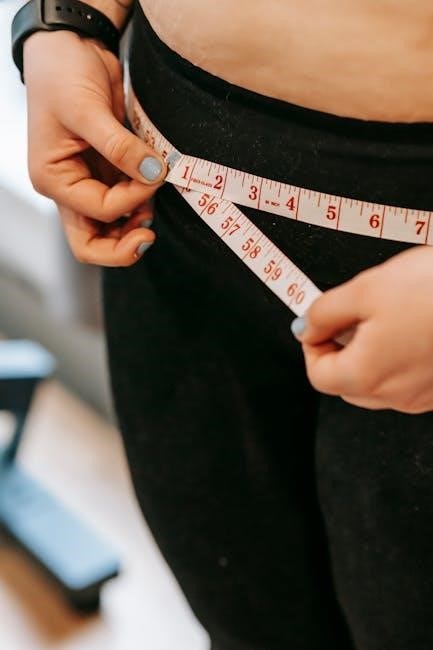and rehabilitation to regain strength and mobility after surgery with exercises detailed in total hip replacement exercises pdf.
Importance of Exercise after Total Hip Replacement
Exercise plays a crucial role in the recovery process after total hip replacement surgery, as it helps to improve mobility, reduce pain and discomfort, and increase strength and flexibility.
A well-structured exercise program can also help to prevent complications, such as blood clots and infection, and promote a faster recovery.
According to various studies, patients who participate in regular exercise after total hip replacement surgery tend to have better outcomes and a reduced risk of revision surgery.
The American Academy of Orthopaedic Surgeons recommends that patients start exercising as soon as possible after surgery, with a gradual progression of exercises over time.
A total hip replacement exercises pdf can provide patients with a comprehensive guide to exercises that can be done at home, including range of motion exercises, strengthening exercises, and functional activities.
Regular exercise can also help patients to return to their normal activities and improve their overall quality of life.
By incorporating exercise into their daily routine, patients can maximize their recovery and achieve optimal results after total hip replacement surgery.
It is essential to consult with a healthcare professional before starting any exercise program to ensure that it is safe and effective.
They can help patients to develop a personalized exercise plan that meets their individual needs and goals.
With the right exercise program, patients can achieve a successful recovery and enjoy a healthier, more active lifestyle.
Exercise is a critical component of the recovery process, and patients should prioritize it to achieve the best possible outcomes.
A total hip replacement exercises pdf can serve as a valuable resource for patients, providing them with the information and guidance they need to stay on track with their exercise program.
By following a well-structured exercise program, patients can minimize their risk of complications and maximize their chances of a successful recovery.
Regular exercise can also help patients to maintain their independence and mobility, reducing their risk of falls and other accidents.
Overall, exercise is essential for a successful recovery after total hip replacement surgery, and patients should make it a priority to achieve the best possible outcomes.

Phase I Posterior Total Hip Replacement Home Exercise Program
Phase I involves gentle exercises like breathing and ankle movements to promote healing and reduce discomfort immediately after surgery with detailed instructions in total hip replacement exercises pdf guidelines online.
Initial Exercises after Surgery
Initial exercises after surgery are crucial for a successful recovery and are typically outlined in a total hip replacement exercises pdf. These exercises are designed to improve mobility, reduce pain, and promote healing.
Patients are usually advised to start with simple exercises such as deep breathing, ankle rotations, and knee bends. These exercises help to prevent blood clots, improve circulation, and maintain range of motion in the hip joint.
It is essential to follow the exercise program carefully and not to overexert oneself, as this can lead to complications. The exercises should be done gently and within the limits of pain.
A physical therapist may also provide guidance on how to perform the exercises correctly and safely. The therapist may also provide additional exercises to help improve strength, balance, and flexibility.
By following the initial exercises after surgery, patients can expect to make a smooth and rapid recovery from their total hip replacement surgery. The exercises will help to reduce pain, improve mobility, and enable patients to return to their normal activities as soon as possible.
Regular exercise and physical therapy are essential for a successful recovery, and patients should be committed to following their exercise program to achieve the best possible outcomes.

Physiotherapy and Advice after Total Hip Replacement
Physiotherapy plays a crucial role in rehabilitation with total hip replacement exercises pdf providing guidance on exercises and advice.

Dressing and Preparing for Recovery
Dressing and preparing for recovery after total hip replacement surgery is crucial for a comfortable and successful rehabilitation process. According to total hip replacement exercises pdf, it is essential to arrange clothes that can be easily reached and put on without straining the hip. Loose and comfortable clothing is recommended, especially during the first few weeks after surgery. Patients should also consider preparing their home by removing any tripping hazards, installing handrails, and having a comfortable and safe place to rest. Additionally, having a list of emergency contact numbers and a plan for follow-up appointments can help alleviate stress and ensure a smooth recovery. By taking these steps, patients can focus on their rehabilitation and make progress with their total hip replacement exercises. Proper dressing and preparation can help prevent complications and promote a healthy and speedy recovery. With the right mindset and preparation, patients can overcome the challenges of total hip replacement surgery and achieve a full and active recovery. Total hip replacement exercises pdf provides valuable guidance on dressing and preparing for recovery, helping patients to take control of their rehabilitation and make a successful transition back to normal life.

Home Therapy Exercises after Total Hip Replacement
Home therapy exercises after surgery include physical therapy to reduce swelling and improve range of motion with exercises.
Standing Exercises
Standing exercises are an essential part of the rehabilitation process after total hip replacement surgery, as they help improve balance, strength, and mobility.
These exercises can be done while holding onto a firm surface for support, such as a walker or a chair, to prevent falls and injuries.
The physical therapist will guide the patient through a series of standing exercises, including weight-bearing exercises, to help the patient regain strength and confidence in their new hip.
The exercises may include standing on one leg, standing with feet together, and standing with feet apart, to improve balance and stability.
The patient will also be taught how to stand up and sit down safely, using proper techniques to avoid putting too much strain on the new hip.
Additionally, the physical therapist may use equipment such as a balance board or a BAPS board to help the patient improve their balance and coordination.
The goal of standing exercises is to help the patient progress to more advanced activities, such as walking and climbing stairs, and to eventually return to their normal daily activities.
By following the standing exercises outlined in the total hip replacement exercises pdf, patients can ensure a safe and successful recovery after total hip replacement surgery.
The exercises should be done regularly, as prescribed by the physical therapist, to achieve optimal results and prevent complications.
With time and practice, patients can expect to see significant improvements in their mobility, strength, and overall quality of life.

